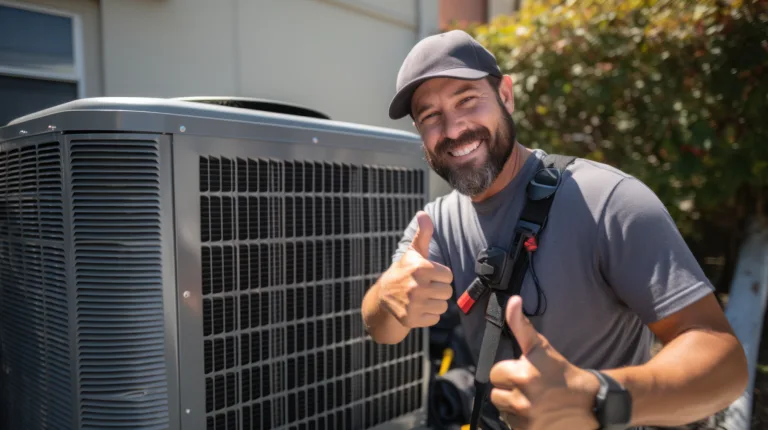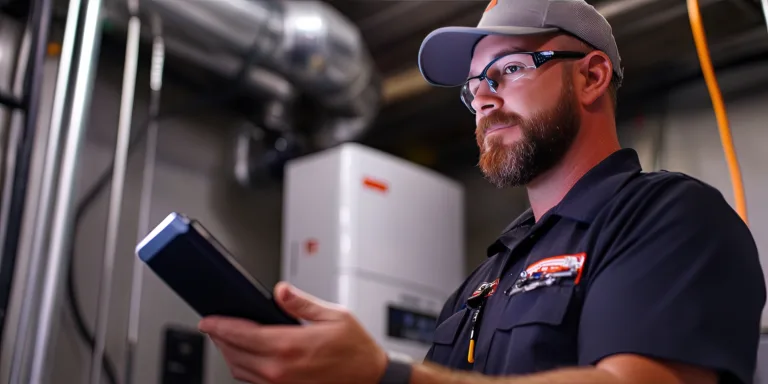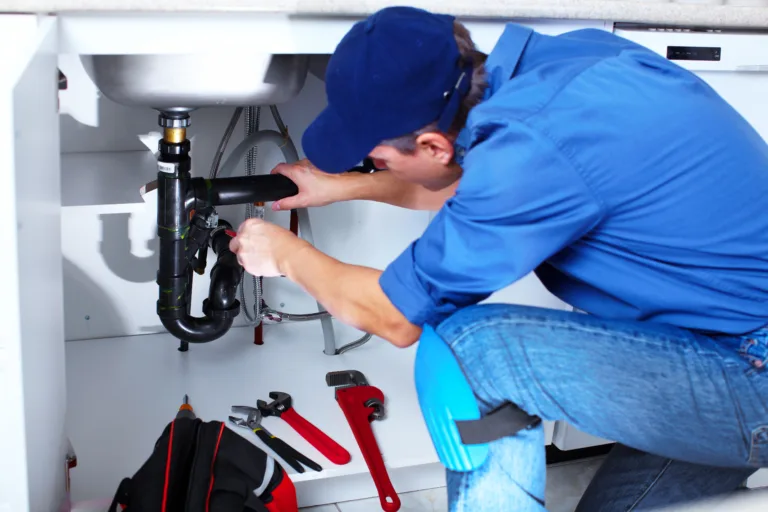At Hansen Family Plumbing & Air, we believe that a little plumbing knowledge can go a long way in keeping your home safe, comfortable, and running smoothly. Plus, it doesn’t hurt to actually understand what your local plumbers are talking about when they provide a diagnosis and repair options during your service call! Whether you’re tackling a DIY project or simply curious about how your various plumbing systems work, getting familiar with some key plumbing terms can empower you to make informed decisions and communicate confidently with professionals. Let’s take a look at some essential and common plumbing terminology that every homeowner should know!
Also, in the coming weeks, we will be posting an in-depth blog on each of these terms so make sure to check back for those to learn more!
Backflow
What It Means:
Backflow is when water flows in the opposite direction from its intended path. This can lead to contaminated water entering your clean water supply—a serious safety concern and something that should be taken care of by a professional, sooner rather than later.
In Practice:
You might hear about backflow during water quality discussions. That’s why many systems include backflow prevention devices to keep the water in your home safe for you and your loved ones.
P-Trap
What It Means:
The P-trap is that familiar U-shaped pipe under your sink or tub. It holds a small amount of water that forms a barrier against sewer gases entering your home.
In Practice:
If your sink is draining slowly or emitting odd odors, checking the P-trap for clogs or leaks might be a good first step. Your local plumbing company can make repairs quickly when you are experiencing any issues with your P-Trap, usually at a minimal cost.
Vent Stack
What It Means:
A vent stack is a vertical pipe that helps maintain neutral air pressure in your plumbing system and allows sewer gases to escape safely.
In Practice:
When you hear gurgling noises or experience slow drainage, a blocked vent stack might be the culprit, and it’s something our team can inspect and clear up.
Water Hammer
What It Means:
Water hammer is the banging or knocking noise in your pipes caused by a sudden stop in water flow. This occurs when a valve closes quickly, creating somewhat of a shockwave.
In Practice:
If you notice this noise, installing water hammer arrestors can help absorb the shock, which can protect your pipes from damage.
Cleanout
What It Means:
A cleanout is an access point in your plumbing system that makes it easier to remove clogs or perform maintenance without disassembling your pipes. You may see ads from plumbing companies offering discounted drain cleaning from “easy access cleanouts.” This is usually where they will bait & switch, attempting to upcharge you if the clog cannot be cleared through one of these cleanouts. At Hansen Family Plumbing & Air, our drain cleaning price is as advertised, no bait and switch here!
In Practice:
Regularly cleaning out these access points can help prevent serious blockages and ensure smooth water flow.
Pressure Regulator
What It Means:
A pressure regulator is a device that controls the water pressure entering your home, protecting your fixtures and appliances from damage due to high pressure.
In Practice:
If you’re experiencing leaks or bursts, having your pressure regulator checked or installed might be the right move. A pressure regulator is imperative to protecting your home’s plumbing systems and fixtures. At Hansen Family, we require our plumbers to check every home’s water pressure to ensure the pressure regulator is working properly, or to suggest installation if needed.
Soldering
What It Means:
Soldering is the process of joining metal pipes together using a filler metal (solder) that melts and forms a watertight bond.
In Practice:
Many plumbing repairs, especially for copper pipes, rely on soldering for secure, leak-free joints. It’s a skill our technicians use to keep your system tight.
Shut-Off Valve
What It Means:
A shut-off valve is a crucial device that stops water flow to a fixture or an entire section of your plumbing system.
In Practice:
Knowing where your shut-off valves are can be a lifesaver during emergencies, allowing you to quickly stop leaks or begin repairs. We now have access to new technology that involves automatic shut-off valves when there is any sign of a leak in your home and can be accessed via an app. Contact our team to learn more about this as it is an investment we find imperative for homes.
Check Valve
What It Means:
A check valve permits water to flow in only one direction, thereby preventing backflow into your clean water supply.
In Practice:
They’re essential in maintaining the integrity of your water lines, especially in areas prone to sudden pressure changes.
Expansion Tank
What It Means:
An expansion tank absorbs excess pressure from water when it heats up and expands, protecting your pipes and fixtures.
In Practice:
Often found in systems with water heaters, an expansion tank is a quiet guardian, ensuring your plumbing remains in tip-top shape.
Ball Valve
What It Means:
A ball valve controls water flow using a hollow, perforated sphere. A simple quarter-turn is all it takes to shut off the flow completely.
In Practice:
Common in main water lines and individual fixtures, ball valves are reliable and easy to use—perfect for quick shut-offs.
Compression Fitting
What It Means:
A compression fitting connects pipes or fixtures without the need for soldering. It uses a compression nut and a sleeve to form a secure, leak-free joint.
In Practice:
Ideal for DIY repairs, these fittings offer a straightforward way to fix or update parts of your plumbing system.
Elbow and Tee
What They Mean:
- Elbow: A curved pipe fitting that redirects the flow of water, usually by 90° or 45°.
- Tee: A T-shaped connector that joins three sections of pipe.
In Practice:
These fittings are essential for navigating the twists and turns of your home’s layout. They help distribute water efficiently to various fixtures.
Flexible Hose
What It Means:
A flexible hose is a coiled or braided tube that connects fixtures or appliances to your water supply, allowing for slight movements without stressing the connection.
In Practice:
You’ll often find flexible hoses on sinks, toilets, or water heaters. Their durability and flexibility make them a practical choice in many installations.
Sump Pump
What It Means:
A sump pump removes accumulated water from a sump basin—typically located in basements or crawlspaces—to prevent flooding.
In Practice:
For homes in areas with heavy rain or high water tables, a sump pump is a critical line of defense against water damage.
Water Meter
What It Means:
A water meter measures the amount of water your household uses, providing essential data for billing and usage monitoring.
In Practice:
Installed where the main water line enters your home, the water meter can also alert you to potential leaks if you notice unexpected usage.
Fixture
What It Means:
In plumbing, a fixture is any device that uses water, such as sinks, toilets, bathtubs, and showers.
In Practice:
Fixtures are the visible parts of your plumbing system that you interact with every day. Regular maintenance of these fixtures can prevent leaks and ensure optimal performance.
Drain
What It Means:
A drain is the outlet of a plumbing fixture that channels water away to the waste system.
In Practice:
Equipped with strainers to catch debris, drains must be kept clear to avoid clogs and backups in your sinks, showers, and tubs.
Union
What It Means:
A union is a fitting that connects two sections of pipe in a way that allows for easy disassembly.
In Practice:
Unions are particularly useful during repairs or replacements, as they let professionals disconnect parts of your plumbing without cutting the pipes.
Bringing It All Together
At Hansen Family Plumbing & Air, we’re all about making sure you feel confident and informed about the systems that keep your home running. Understanding these plumbing terms—from the backflow and P-trap to the more technical parts like dielectric unions and compression fittings—can help you identify potential issues before they become major headaches. Plus, knowing the difference between a ball valve and a check valve means you’re better prepared for those moments when you need to shut off water quickly or understand a repair recommendation.
Remember, while a little knowledge goes a long way, sometimes it’s best to call in the professionals. If you ever have questions or need expert assistance, we’re here to help! Give us a call at Hansen Family Plumbing & Air—we love chatting about all things plumbing and ensuring your home stays safe, efficient, and comfortable.


